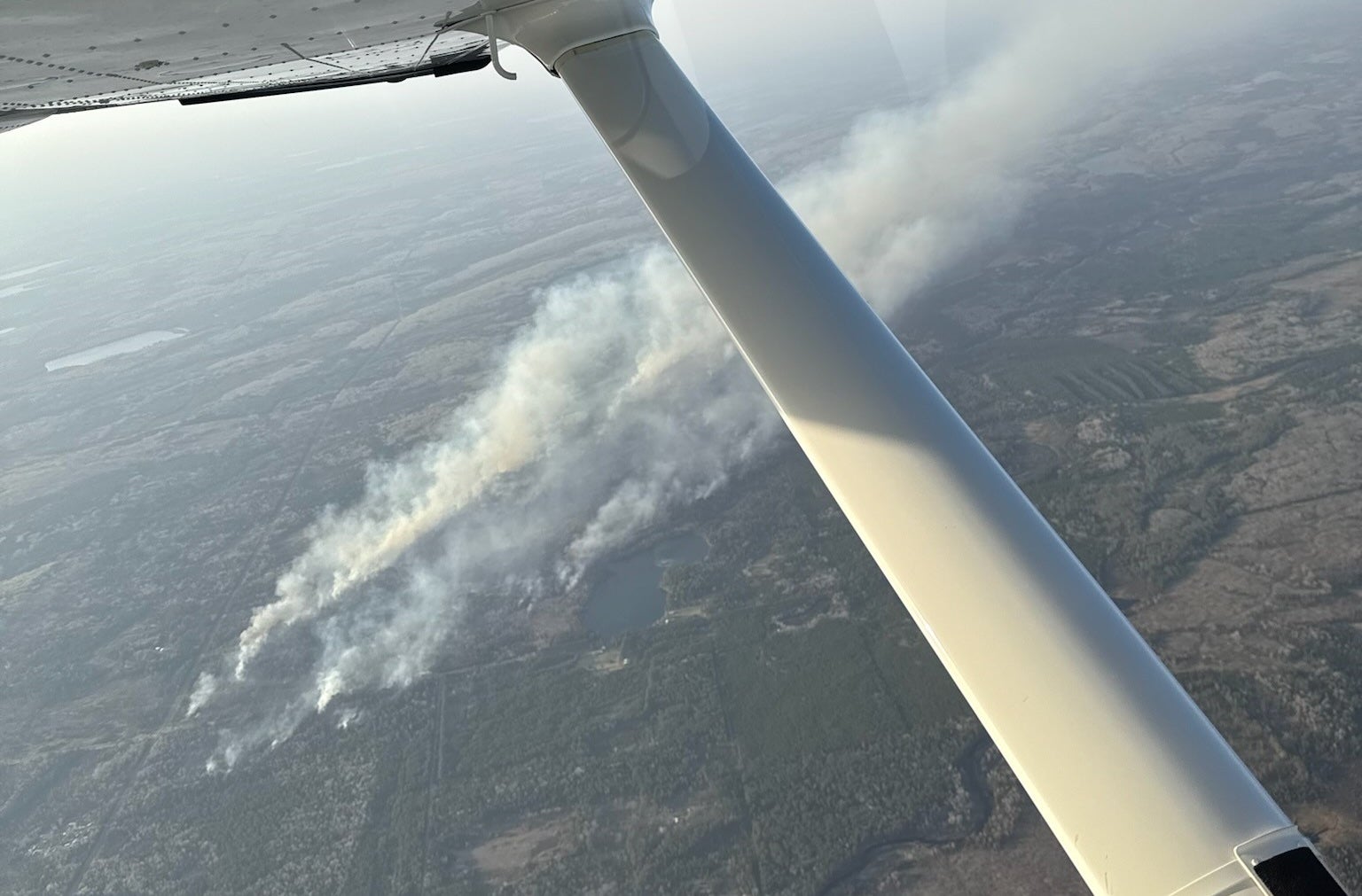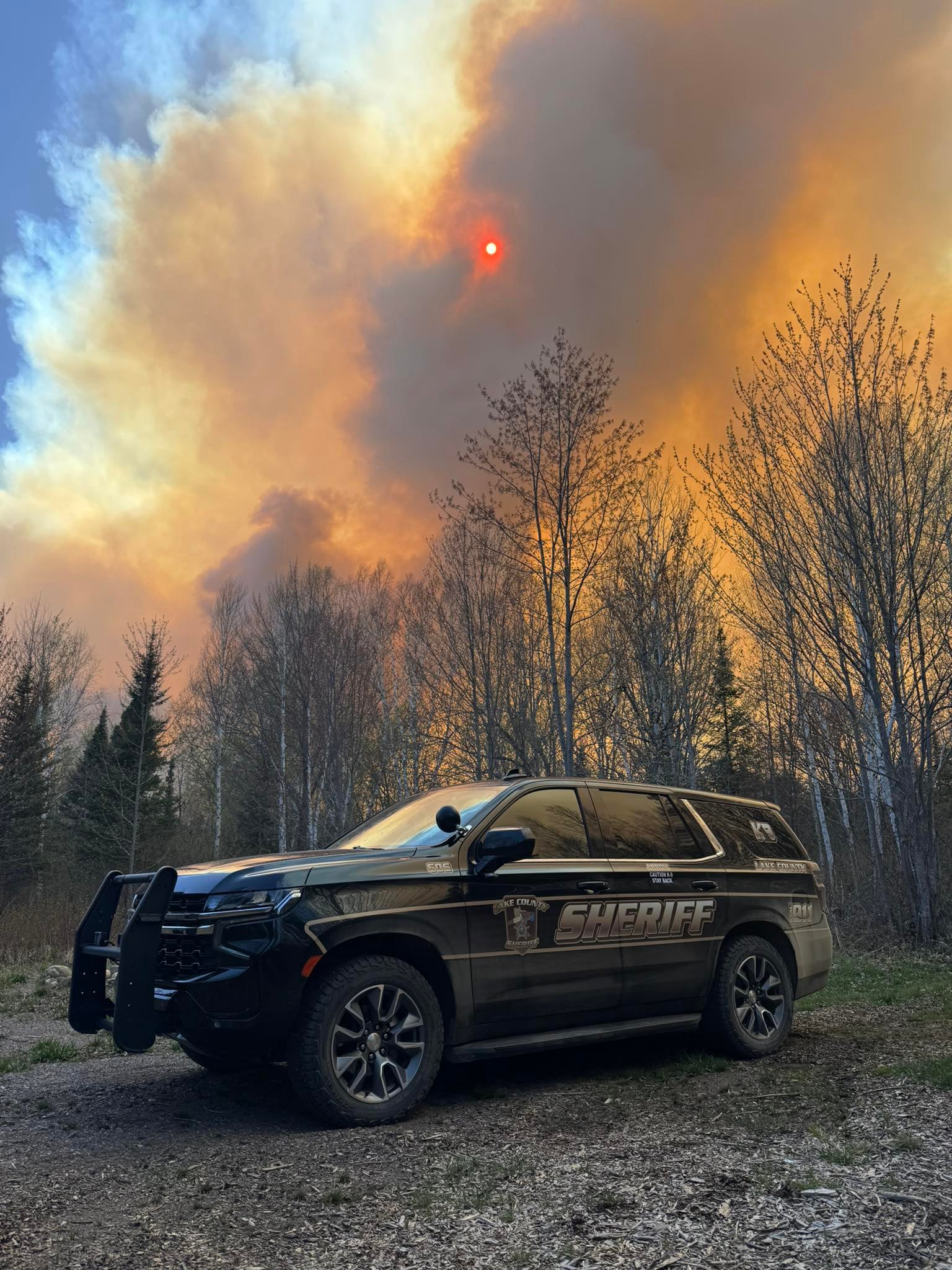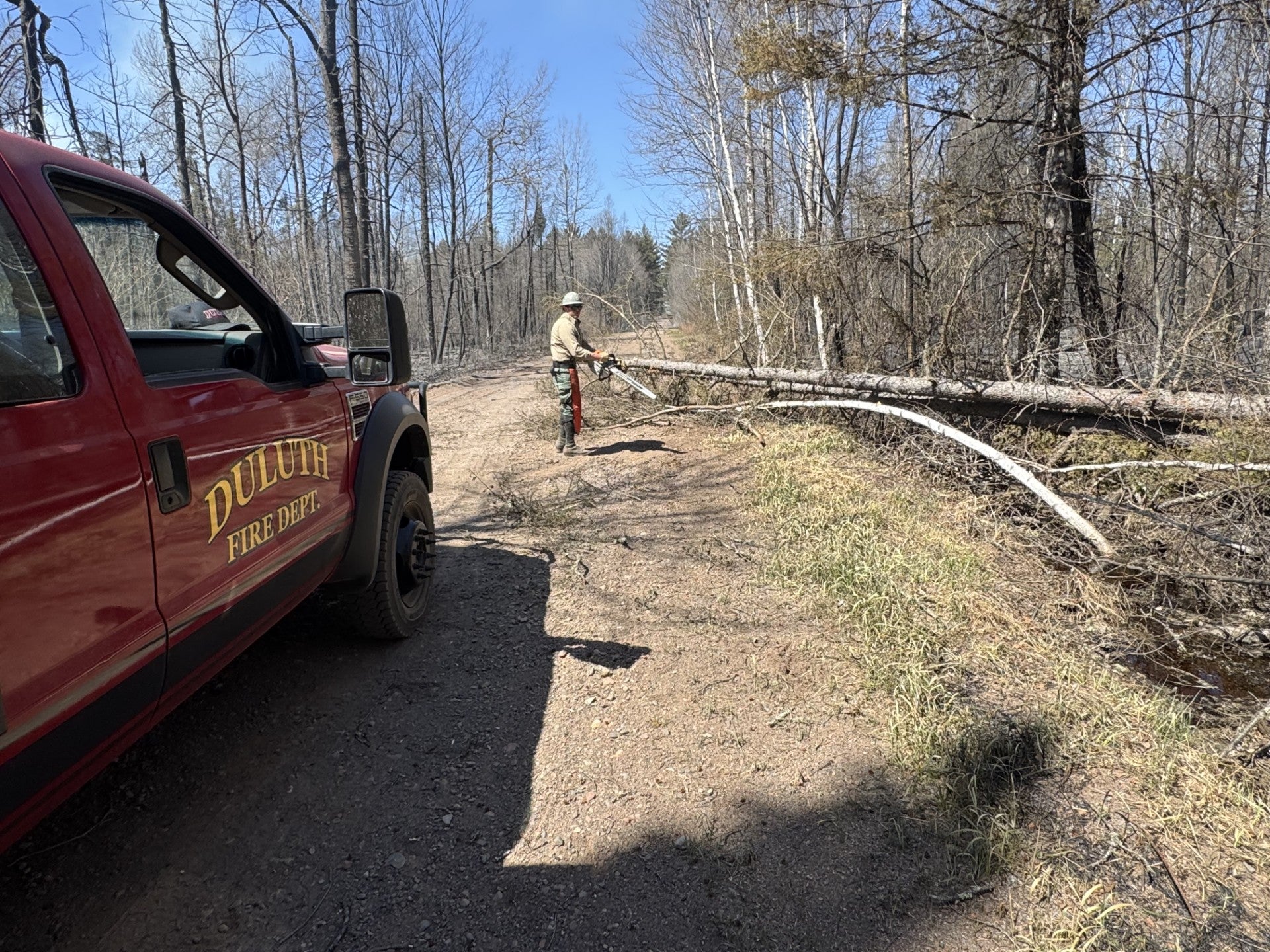Three raging wildfires in northern Minnesota have forced evacuations and the deployment of members of the state’s National Guard to battle the blazes.
The fires continued to expand on Tuesday, fanned by hot, dry, and windy weather conditions.
In Brimson, the largest of the three wildfires, known as the Camp House fire, rapidly ballooned to 11,778 acres. The fire, which started on Sunday, has destroyed more than 40 structures and led dozens of people to evacuate. There were 80 people working to respond to the incident, and several road closures implemented.
The “fire has been very active the last two days, with the burning period going into the night,” the Minnesota Incident Command System wrote in a Facebook post on Tuesday.

In the nearby Superior National Forest, the Jenkins Creek Fire had spread over 6,800 acres, quadrupling in size after erupting Monday morning.
“The fire moved quickly, driven by strong southerly winds,” according to officials.
Southwest of the two wildfires, the Munger Shaw fire tore over more than 1,400 acres, according to the wildfire-tracking app Watch Duty. More evacuations were reported in that area, according to the national forest.
The causes of all of the fires remain under investigation. Not one of the fires is contained.

On Monday, Democratic Governor Tim Walz, former Vice President Kamala Harris’ 2024 running mate, said he had authorized the National Guard to assist in the response.
“Wildfires in northern Minnesota have forced families to evacuate and caused severe damage to and loss of property. My thoughts are with those Minnesotans who are being impacted by this dangerous and unpredictable fire,” said Walz.
As the fight continues, an air quality alert issued due to the spread of wildfire smoke has been extended through Wednesday.
“Air quality is expected to reach the orange AQI level, which is unhealthy for sensitive groups,” the Minnesota Pollution Control Agency warned.
Similar alerts were issued at around the same time last year due to wildfire smoke coming from Canada.

Walz and the state’s forestry officials told residents to be extra careful about anything that could cause heat or sparks. Burn restrictions were in place.
Red flag warnings have been issued for 65 counties, and any wildfire that starts in this weather is expected to explode. Climate change is making wildfire-prone conditions more frequent.
The governor said that while Minnesota typically sees more than 1,100 wildfires a year, 970 have already occurred this year. Of those, 40 were on Sunday and Monday, according to WCCO News.
“I’ve worked for DNR (Department of Natural Resources) Forestry for nearly 30 years, and the weather the last few days is just really unprecedented,” Patty Thielen, director of forestry for the Minnesota Department of Natural Resources, told the station. “Really low humidity, high winds have allowed fires to spread really quickly.”


